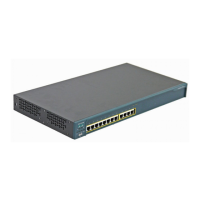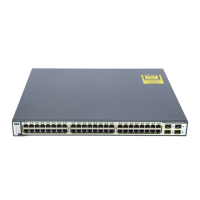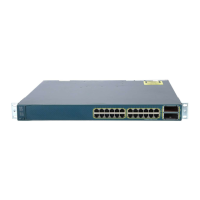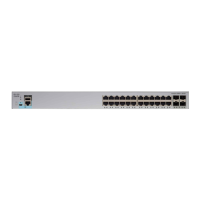24-10
Catalyst 6500 Series Switch Software Configuration Guide—Release 8.7
OL-8978-04
Chapter 24 Configuring NSF with SSO MSFC Redundancy
Using the CLI to Configure NSF/SSO
Verifying OSPF NSF
To verify OSPF NSF, you must check that the NSF function is configured on the SSO-enabled
networking device. To verify OSPF NSF, follow these steps:
Step 1 Verify that “nsf”’ appears in the OSPF configuration of the SSO-enabled device by entering the show
running-config command.
Router# show running-config
router ospf 120
log-adjacency-changes
nsf
network 192.168.20.0 0.0.0.255 area 0
network 192.168.30.0 0.0.0.255 area 1
network 192.168.40.0 0.0.0.255 area 2
.
.
.
Step 2 Verify that NSF is enabled on the device by entering the show ip ospf command.
router> show ip ospf
Routing Process "ospf 1" with ID 192.168.2.1 and Domain ID 0.0.0.1
Supports only single TOS(TOS0) routes
Supports opaque LSA
SPF schedule delay 5 secs, Hold time between two SPFs 10 secs
Minimum LSA interval 5 secs. Minimum LSA arrival 1 secs
Number of external LSA 0. Checksum Sum 0x0
Number of opaque AS LSA 0. Checksum Sum 0x0
Number of DCbitless external and opaque AS LSA 0
Number of DoNotAge external and opaque AS LSA 0
Number of areas in this router is 1. 1 normal 0 stub 0 nssa
External flood list length 0
Non-Stop Forwarding enabled, last NSF restart 00:02:06 ago (took 44 secs)
Area BACKBONE(0)
Number of interfaces in this area is 1 (0 loopback)
Area has no authentication
SPF algorithm executed 3 times
Configuring IS-IS NSF
To configure IS-IS NSF, perform this task:
Purpose Command
Step 1
Enter global configuration mode.
Router# configure terminal
Step 2
Enable an IS-IS routing process, which places the
router in router configuration mode.
Router(config)# router isis [tag]
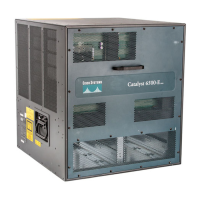
